By Christopher Miskimon
The chase was on in early autumn 1950. The North Korean People’s Army, after its invasion of South Korea, fell back north with United Nations’ forces in close pursuit following the Battle of Inchon the previous month. The United Nations forces, mostly American and South Korean but with a sizable contingent from the British Commonwealth and other member nations, kept moving north in an attempt to destroy remnants of the NKPA and put an end to the war. As summer gave way to autumn on the Korean peninsula, it appeared this operation would end in a swift victory after the initial setbacks experienced during the war’s first several months. Still, the NKPA was not entirely out of action.
The Korean War caught the United States by surprise. American troops occupied South Korea after World War II, but President Harry S. Truman had withdrawn most of the troops by 1949. By that point, only about 300 advisors remained in country where they continued training the fledgling South Korean Army.
North Korean Premier Kim Il-sung and his advisors wanted to invade South Korea, but they were restrained by the Soviet Union, which wanted to avoid a war that was sure to draw the United States into the conflict. In January 1950 U.S. Secretary of State Dean Acheson stated that South Korea sat outside the United States’ defensive perimeter in the Pacific Theatre. This allayed the fears of both the Soviet Union and North Korea, and by April 1950 Soviet Premier Joseph Stalin approved an invasion. The Soviets, who had been liberally supplying the NKPA with weapons and equipment for their ground forces, had given North Korea’s army hundreds of T-34/85 tanks and SU-76 assault guns.
For the American occupation force in Japan, Korea was a low priority and not considered a good assignment. Lt. Gen. John R. Hodge, commanding U.S. forces in Korea and the XXIV Corps, summed up this attitude in an apt if crude statement. “There are only three things the troops in Japan are afraid of,” he said. “They are gonorrhea, diarrhea, and Korea.” Other Western leaders made similar comments. “Korea is not worth the bones of a single British grenadier,” wrote a member of the Far Eastern Department of Great Britain’s Foreign Office. When the invasion began the West scrambled to find troops and equipment for South Korea’s Republic of Korea Army, but the drawdown of U.S. military forces after World War II left the U.S. Army denuded of men, weapons, and vehicles.
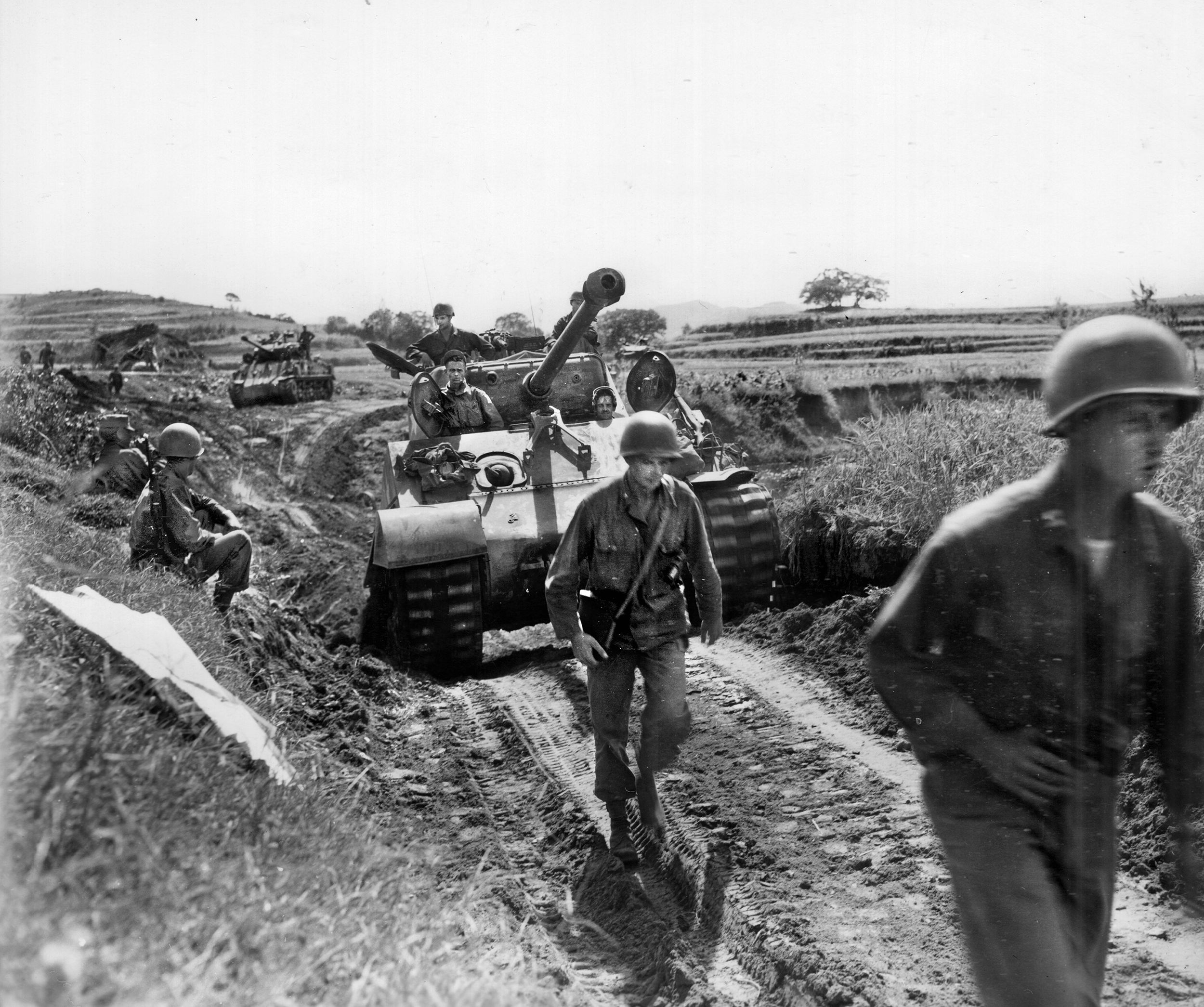
The NKPA invasion nearly succeeded, but United Nations Command troops managed to hold in the Pusan Perimeter in the southeast corner of the peninsula. A risky but successful amphibious landing at Inchon in September 1950 defeated the North Koreans and facilitated a breakout by the United Nations forces bottled up in the Pusan Perimeter. By October the forces from the Pusan Perimeter had captured the North Korean capital of Pyongyang. Afterwards, they began a steady advance north toward the Yalu River, which marked the border between North Korea and China.
One of the United Nations units pushing north was the United Kingdom’s 27th Commonwealth Brigade. This formation acted as the left flank of Eighth Army, the main United Nations force in Korea. The infantry brigade comprised the Third Battalion, Royal Australian Regiment; the First Battalion of the Argyle and Sutherland Highlanders; and the First Battalion of the Middlesex Regiment.
These infantry battalions were among the first British and Australian units to enter the Korean War. Due to their hasty arrival, they were not accompanied by their support elements. To remedy the situation, the Eighth Army attached American combat engineers from the 72nd Combat Engineer Battalion of the 90th Field Artillery Battalion to the brigade. These troops came equipped with 155mm howitzers, as well as a tank battalion. This made the 27 Commonwealth Brigade similar to a U.S. regimental combat team in size and organization.
The American armored unit was the 89th Tank Battalion. This unit began life as the 8072nd Medium Tank battalion formed in Japan during the frantic days just after the North Korean invasion. Lt. Col. Welborn G. Dolvin, the commander of the battalion, was at Fort Benning, Georgia, at the time awaiting orders transferring him to a new assignment in Austria. Dolvin was playing golf on July 12, 1950, when a messenger arrived with new orders instructing him to go to Japan to take command of the tank battalion.
He arrived a week later to find his command in a woeful state. It consisted of six officers and 65 enlisted men from Eighth Army and nine officers and 146 enlisted men from the 2nd Armored Division from Fort Hood, Texas. Some of them had been working in the Post Exchange. Dolvin previously commanded the 191st Tank Battalion during World War II, which served in Italy and Europe, and he finished the war in the Seventh Army supporting the 45th Infantry Division. Knowing his unit would enter battle in a matter of days, he set about preparing his men.
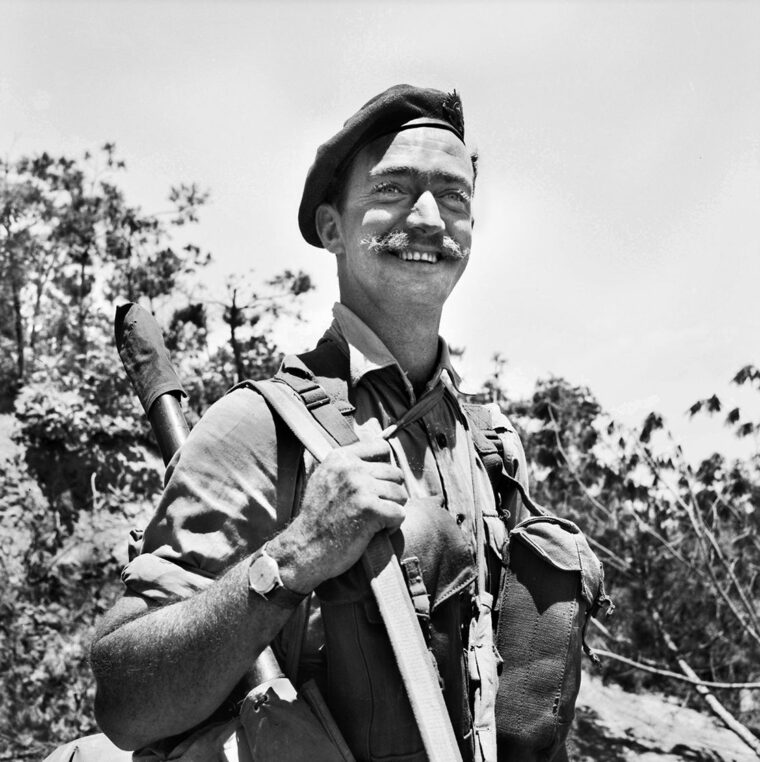
Three medium tank companies formed the battalion’s primary striking power. One was equipped with the M26 Pershing, a tank which had entered service in the final months of World War II. It boasted a 90mm gun and four inches of frontal armor. The U.S. Army had sent the Pershings from the Hawaii National Guard. The other three companies—due to an organizational quirk, the battalion actually had four companies instead of three—used the venerable M4A3E8 Sherman, which had a 76mm gun and three inches of frontal armor. The so-called Easy 8 was an upgraded version of the standard Sherman and served during the last six months of World War II.
The tank battalion also received support armored vehicles, such as the M45 105mm howitzer tank, halftrack mortar carriers, and the M39 armored utility vehicle. The latter was a modified version of the obsolete M18 Hellcat tank destroyer used as an ambulance, ammunition carrier, or troop transport. One company was in Pusan with the rest in Japan where they were scrambling to prepare to ship out for South Korea.
Circumstances forced the battalion to enter combat despite the need for more training and preparation. On August 4, 1950, the unit assembled in Pusan. Three days later the U.S. Army redesignated it as the 89th Medium Tank Battalion. Before the breakout from the Pusan Perimeter, Dolvin rotated his companies from the line to rear areas for maintenance and rest. This was when Dolvin learned about organizational mixup on the number of his battalions. He hid the presence of his fourth company, D Company, by keeping it out of combat. This gave him time to train the company’s men. They entered action on September 15, 1950. Dolvin also had a core of combat-experienced officers and non-commissioned officers to strengthen the formation.
The breakout and the Inchon landings quickly overwhelmed the NKPA. By mid-October the 27 Commonwealth Brigade was in Pyongyang. Brig. Gen. Basil Coad of the British Army commanded the brigade, which was under the operational control of the 1st Cavalry Division. Some distance separated the brigade from the division, however, so the brigade operated largely on its own. The unit advanced north out of Pyongyang on October 22, 1950. The infantry rode in trucks or on the backs of the American tanks. The column stretched for 2.5 miles. A platoon of tanks led the way to deal with any sudden appearance of the enemy.
This was necessary because the NKPA, although it had suffered some casualties, was not entirely defeated and still had some T-34/85 tanks and SU-76 assault guns. This particular Russian tank model had an 85mm cannon while the SU-76 used a smaller 76mm artillery field gun which could still knock out the Sherman with a solid hit. The T-34/85 generally was on par with the M4A3E8 Sherman but was outclassed by the M-26 Pershing. The Sherman had an advantage in its high-velocity, armor-piercing ammunition, developed at the end of World War II.
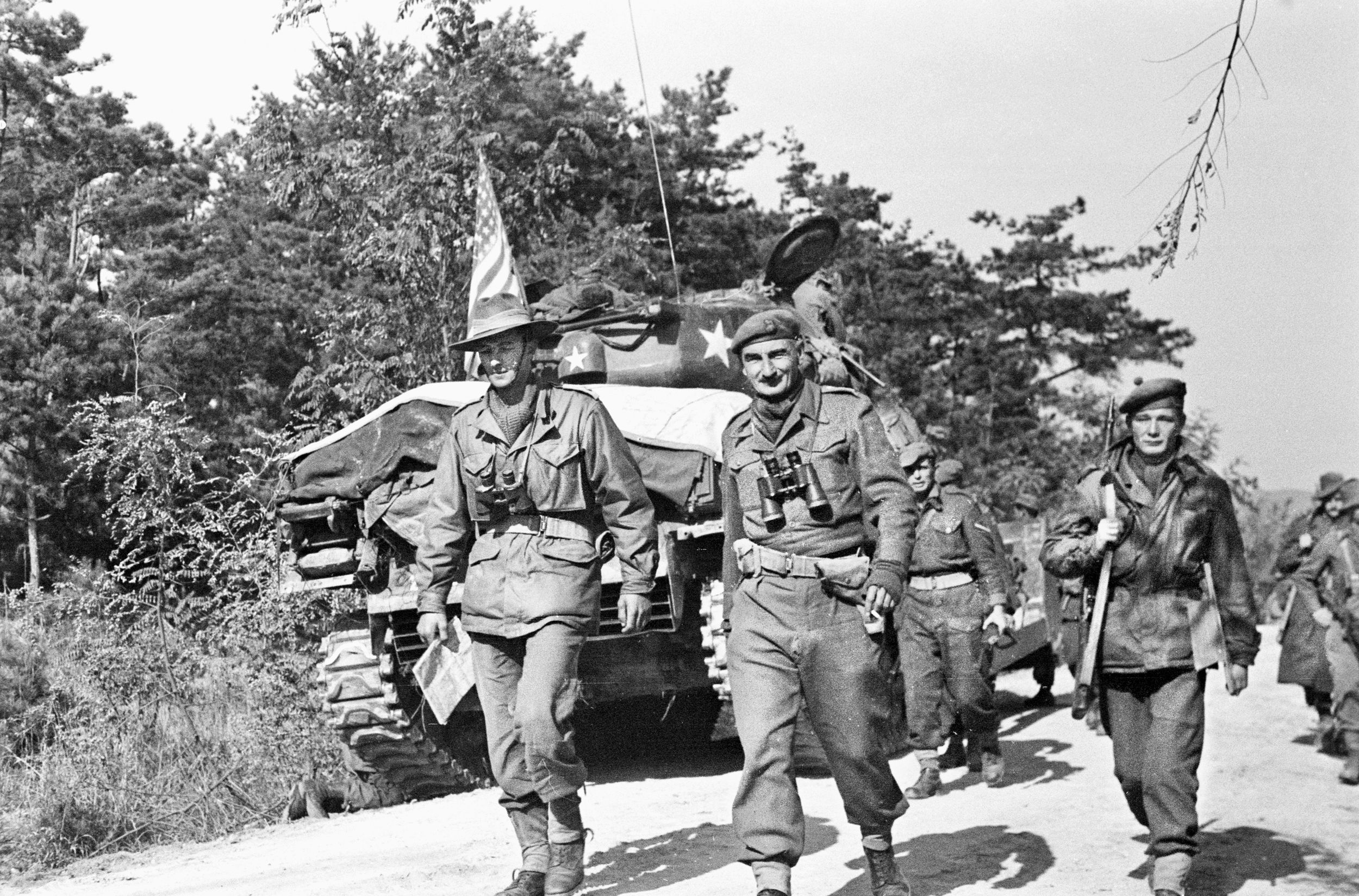
The brigade encountered the enemy almost immediately. As it drew near to Yongju, Coad ordered forward the Australians for their first combat action as a unit. The brigade’s mission was to assist the U.S. 187th Airborne Regiment. The American paratroopers had dropped into an area 25 miles north of Pyongyang to cut off retreating NKPA units. The North Koreans managed to avoid this trap, occupy some high ground and engage the paratroopers. The Australians received orders from above to break through and relieve the 187th Airborne.
The 3RAR arrived in the area of an apple orchard, where they began to receive sniper fire from some North Korean troops. Lt. Col. Charlie Green, the battalion commander, ordered an infantry attack. He chose not to use the supporting American tanks or artillery, since they did not know exactly where the friendly paratroopers were. The attack took the main North Korean force by surprise, given that they were focused on the U.S. paratroopers. Captain Archer P. Denness, who led C Company and whose troops had nicknamed “Armor-Piercing Archie,” directed an attack that destroyed the NKPA troops in a three-hour battle.
“The young soldiers were, if anything, over eager to get into their first fight, but the apple trees were in full leaf and visibility was a real problem,” recalled Lieutenant David Butler of the Third Battalion, Royal Australian Regiment. “Control was difficult and the worst outcome of the first engagement would have been that a man was shot by one of his mates. The NCOs and the senior soldiers were absolutely splendid and quickly got the neophytes through the momentary confusion which all soldiers experience in their first battle.”
The Australians broke through to the 187th Airborne. They inflicted 500 casualties on the enemy at the cost of just seven men. Denness received the Australian Military Cross for his bravery and leadership, and the U.S. Army awarded Butler a Silver Star. The action, known to the Australians as the “Battle of the Apple Orchard,” blooded their inexperienced soldiers and prepared them for the fighting to come.
After relieving the 187th Airborne at Yongju, the brigade continued north. It encountered little resistance until October 25 when the lead elements reached Kujin on the Taeryong River. At that location they found one span of the 300-meter-long bridge collapsed and lying in the water. The 3RAR sent a few squad-sized elements across the bridge on foot using ladders to cross the missing span. Once across, 50 North Korean soldiers surrendered to them, but another group of enemy soldiers fired at both the Australians and the North Koreans trying to surrender. The Australians returned to the other side of the river bringing with them 10 prisoners.
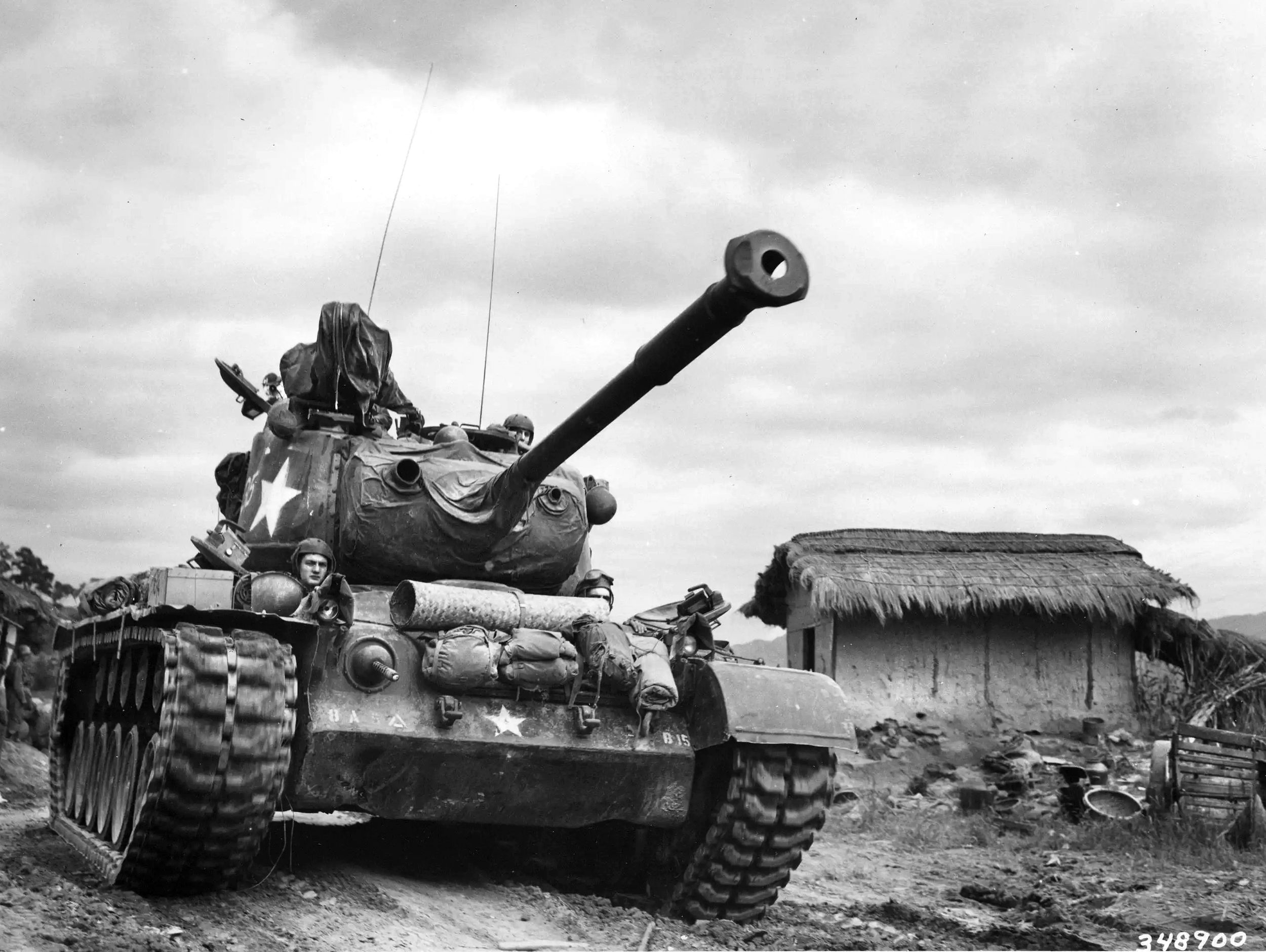
An American LT-6G Mosquito reconnaissance aircraft, which was scouting the far bank, reported two entrenched NKPA companies. Green immediately ordered an air strike. A flight of U.S. Air Force F-80 Shooting Stars soon appeared overhead. Equipped with six 12.7mm machine guns, they strafed the NKPA positions before sunset.
Meanwhile, the reconnaissance aircraft located another bridge, but it required reinforcement before it could handle tanks. The attached American engineers went to work. To create a bridgehead, Green sent A and B companies of the 3RAR across the river to entrench on both sides of the road. D Company went to the nearby town of Pakchon to secure it, while C Company stayed in reserve. The NKPA began shelling the Australians on the north side of the bridge with mortars and artillery at 7:30 p.m. As the shells crashed down on the entrenched Australians, the North Koreans also opened up with small arms fire.
Three hours later the small arms fire increased, so C Company crossed the bridge as reinforcements. The NKPA infantry had T-34/85 tanks in support. The fighting grew more serious, and before dawn on October 26 an NKPA unit moved into the road near some well-hidden Australian troops. A tank and a North Korean colonel in a jeep accompanied them. The Australians opened fire with machine guns, grenades, and mortars from only a few yards away. The decimated North Koreans retreated with their T-34/85. This ended the fighting for the night. The deceased enemy colonel had a map showing the various locations of units of the NKPA 17th Tank Regiment. This revealed to the Australians who they were fighting. It also indicated that the NKPA still had some armor in action.
This was the stiffest resistance the brigade had seen since Pyongyang. Coad believed the NKPA was getting its balance back after their long retreat. The advance resumed the next day, but it was more cautious, proceeding slowly as the brigade carefully checked likely enemy positions before moving past them. The reconnaissance aircraft preceded the formation as well, alert for enemy concentrations. The column’s next objective was Chongju, which was situated west of Pakchon on the north side of Taeryong River. Although the column had advanced just 15 miles on October 28, it had managed to avoid enemy ambushes.
The next morning the column resumed the advance, heading west toward Chongju. The 3RAR again led the way, with D Company of the 89th Tank Battalion in the vanguard. The infantry rode atop the tanks but dismounted each time they had to check a suspicious piece of high ground on the column’s flanks along the road. A liaison plane flew overhead, piloted by Lieutenant James T. Dickson. He scouted well ahead of the column, reporting any enemy sightings, which were engaged by roving fighters. If Dickson spotted anything of immediate concern, he would either radio the column or fly over the tanks and drop a message.
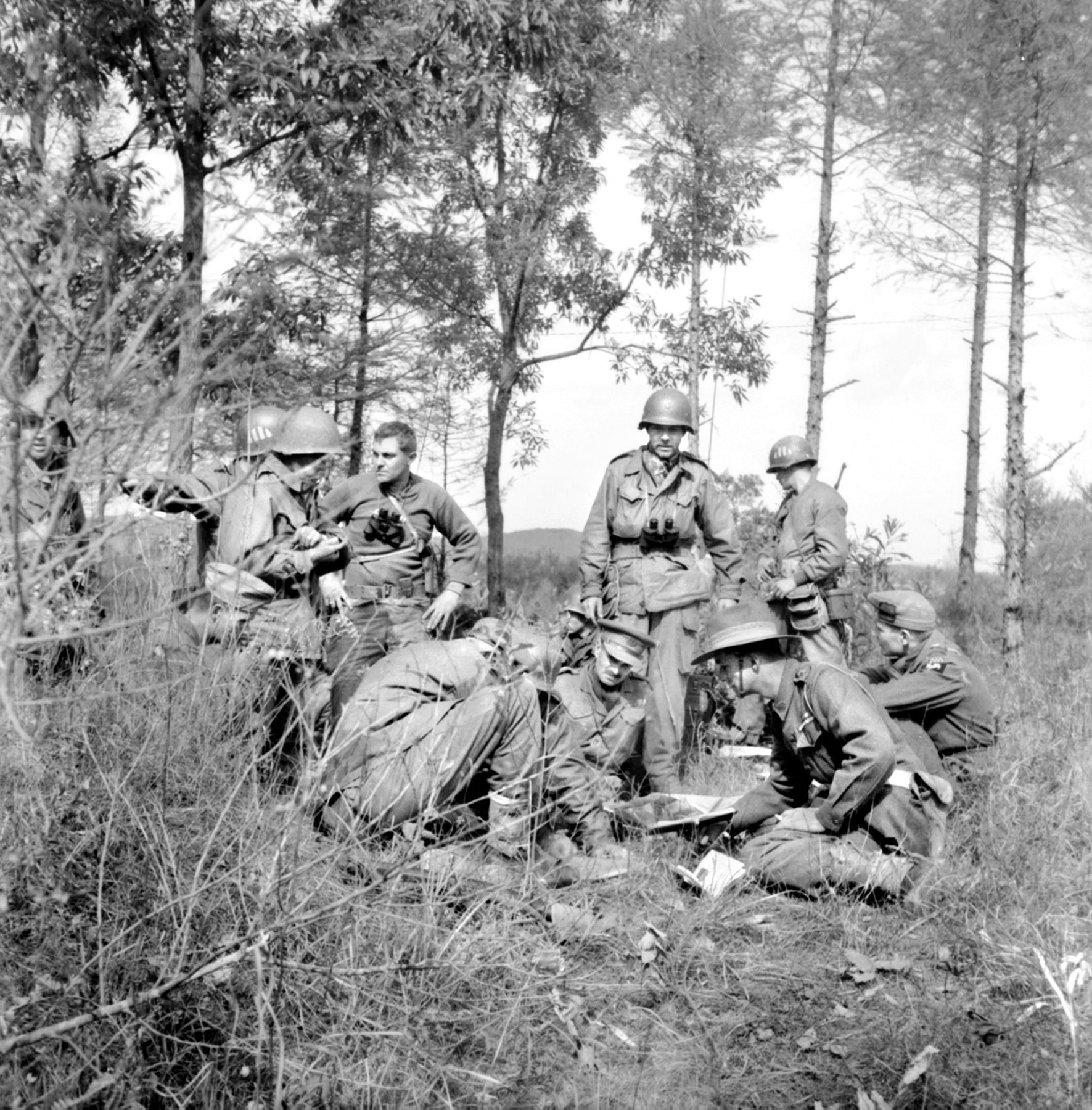
The morning passed uneventfully but about noon, as the column reached a hilltop, Dickson observed a substantial NKPA force of approximately 300 infantry with T-34/85 tanks entrenched and camouflaged on both sides of the road 2.5 miles ahead of the column. The enemy armor was clustered atop a ridge around a narrow pass where the road cut through a hill. Some paddy fields sat between the two forces.
Dolvin and Green came forward to plan their attack, but Dickson soon signalled them again. He had spotted what he thought was another camouflaged T-34/85 just over the next ridgeline, entrenched on the reverse slope, where any attacker would be silhouetted by the skyline. All fighter planes were engaged elsewhere, so Dickson requested that the 89th Tank Battalion place indirect fire on the location.
The second tank platoon in the column was D Company’s 1st Platoon, led by Lt. Francis G. Nordstrom. D Company used the M4A3E8. Its 76mm cannon had a less effective high-explosive shell than the M26 Pershings farther back in the column, but they were within range. Nordstrom did not think his platoon would hit the target, since they could not see it, but fired anyway. Dickson adjusted the fire. The M26 fired 10 rounds. The result was that thick, dark smoke, similar to that caused by burning gasoline, billowed skyward from beyond the ridgeline. Dickson told the tankers to cease fire.
While Nordstrom’s platoon engaged the enemy armored vehicle, Dolvin and Green decided on an attack by the American tanks supported by the Australian infantry. It was a mutually beneficial plan given that tanks require infantry to protect them from the enemy’s antitank teams. In return, the Australian infantry would benefit from the support that the American tank would provide for them. Nordstrom liked to be in front, where he felt he could control the action, his platoon would lead the way.
The next platoon, commanded by Lieutenant Gerald Van Der Leest, received orders to follow 500 yards behind until it reached a point 1,000 yards from the pass. There the infantry would dismount and take the high ground in parallel to the road on the right. Green ordered A Company to seize that ground. Lieutenant Alonzo Cook’s tank platoon would do the same thing to the left flank with 3RAR’s D Company. Both trailing tank platoons were to move to the sides of the road to support the infantry. D Company was to secure the south side of the road and then support A Company while it made its assault.
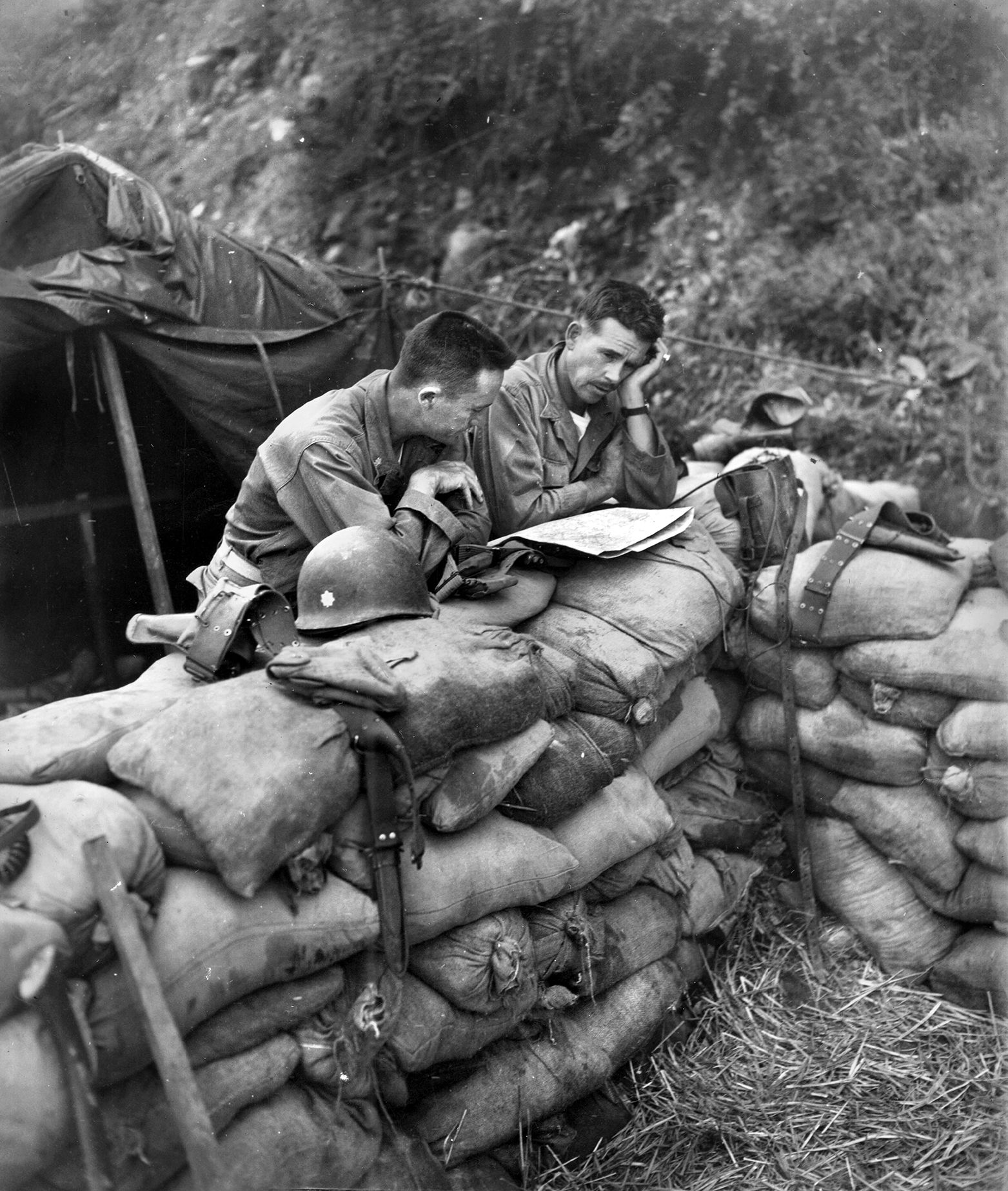
The attack rolled out with Nordstrom’s tank in the lead. When his Sherman arrived within 100 yards of the road cut, he spotted NKPA troops climbing a hill to his left. The lieutenant ordered a machine gunner to fire at them. Within moments he saw another group of North Koreans to his right, moving a machine gun toward the pass. He ordered his gunner to traverse the turret toward this group and place cannon fire on them. The 76mm gun sent a high-explosive round slamming into the ground right next to the enemy machine gunners. The blast tore away some nearby foliage, exposing a dug in T-34/85 on the forward slope of the ridge.
The enemy tank fired its main gun as soon as its position was revealed. The 85mm round, indicated by a green tracer, passed between Nordstrom’s head and the open hatch lid. The American officer ordered his gunner to fire armor-piercing rounds, in the stress of the moment dispensing with the usual fire order. The loader shoved an armor-piercing round into the cannon’s chamber and the gunner depressed the foot pedal which acted as the weapon’s trigger. With a loud crack, the supersonic round flew from the muzzle amid a flash of flaming propellant. The projectile struck the front of the T-34/85 less than 100 yards away. The gunner quickly fired two more rounds. The third caused a large explosion of fuel and ammunition. The explosion produced a cloud of black smoke to the northeast that obscured the high ground to the right side of the road.
Concerned about what lay beyond the smoke, Nordstrom ordered the rear tank in his platoon’s column to fire its machine gun and cannon through the smoke and into the high ground beyond it. The tank’s commander, Sergeant William Morrison, complied with the order. The other tank crews in the platoon spotted more North Koreans to the column’s left and opened fire as well. Nordstrom decided not to advance into the narrow pass because he believed the enemy would have it covered with an antitank weapon. If his tank were hit in the pass, it would block the road and be impossible to move until the North Koreans on the high ground were defeated or driven off. He therefore decided to stay about 70 yards short of the pass itself.
As the platoon’s tanks fired on the enemy to their left, a round blew the camouflage off another T-34/85 dug in almost opposite of the one Nordstrom’s gunner had just destroyed. Choosing not to wait for orders, the gunner traversed the turret onto the new target and fired at point-blank range. With another armor-piercing round loaded, he depressed the foot pedal again and sent it crashing into the T-34/85. His second round caused a large explosion, meaning it likely struck the enemy tank’s ammunition cache, which sent part of the T-3/85’s turret flying 50 feet into the air.
The North Korean T-34/85 tank had a flaw in its turret design where an internal explosion would break the weld on the tank’s turret roof. There are many photographs of T-34/85s with the roof of their turret blown off when the ammunition inside the vehicle detonated. This is probably what the Americans saw rising into the air. Subsequent U.S. Army evaluations of captured T-34/85s indicated that the turret’s roof was a weak point on the tank, even though the vehicle overall was considered of high quality.
As Nordstrom’s platoon dealt with the enemy to their front, the Australian infantry attacked along the high ground south of the road. D Company, on the left, came under heavy fire from NKPA positions but had good support from Cook’s platoon of Shermans, which managed to follow them up the hillside. They would fight for the next two hours to secure the high ground south of the road. The 155mm howitzers of the 90th Field Artillery Battalion and the 3-inch mortars of 3RAR’s Support Company also fired on the NKPA positions.
Back on the road, the main guns on the two lead tanks in Nordstrom’s platoon went out of action due to faulty rounds. As the crews struggled to clear the jammed rounds an enemy shell flashed past Nordstrom’s tank from its left front, another eerie green tracer revealing its trajectory. Nordstrom radioed his platoon sergeant, Master Sergeant Jasper W. Lee, and told him to fire in that direction. Jasper did not have a good view of the enemy, so he placed a general fire on the area. A few minutes later the crews of the lead tanks cleared their cannon. Nordstrom’s vehicle had the best field of fire on the area the incoming fire came from, and he suspected an enemy armored vehicle. He had his gunner place an armor-piercing round every five yards along the top of the ridge, since there was no other logical place to hide a tank or self-propelled gun. When the sixth round hit the ridgeline, there was a flash followed by an explosion which lit the nearby trees and bushes on fire.
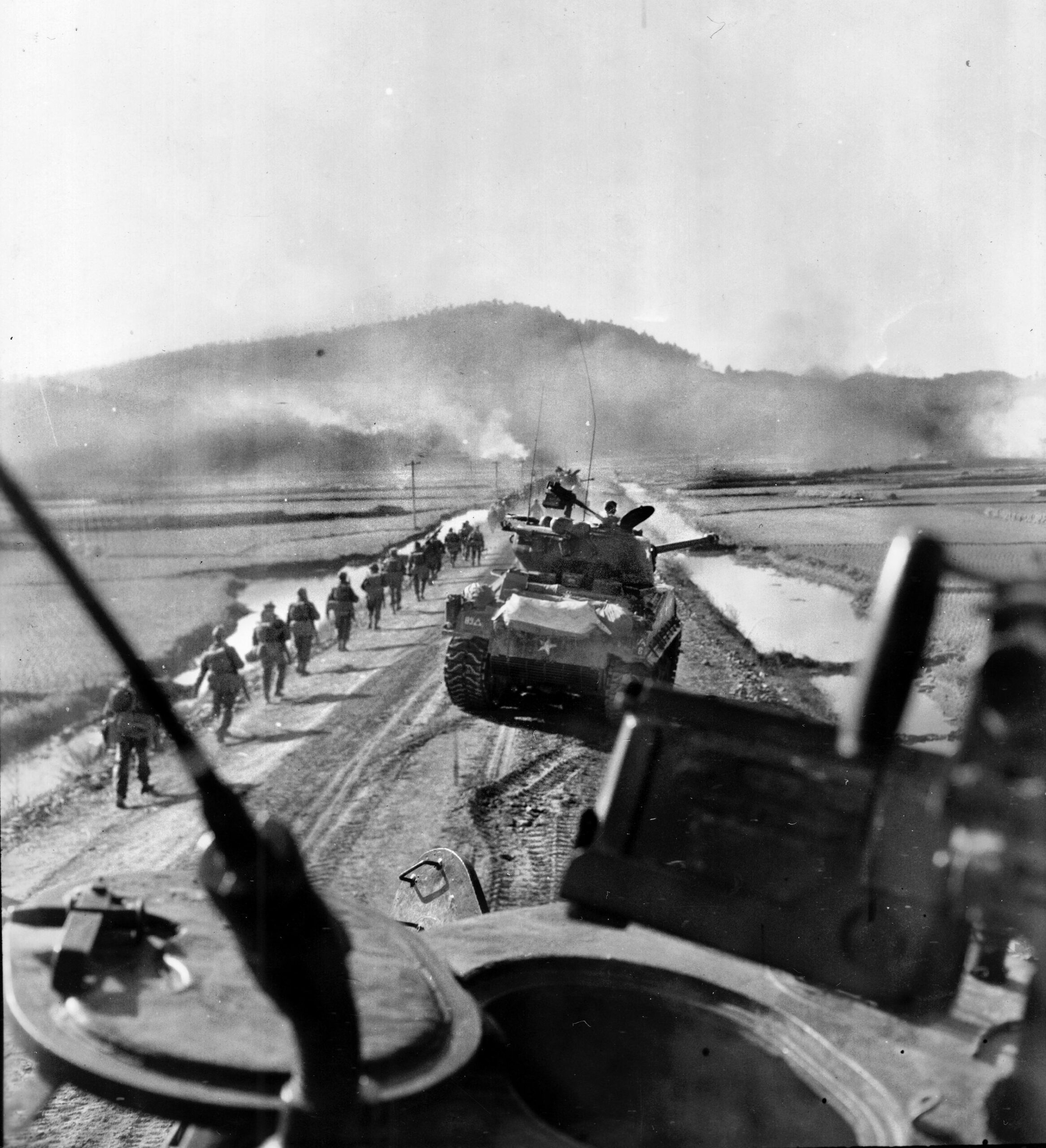
A few minutes later another enemy round flew in, this time from the right front. It soared past Nordstrom, about a foot above the turret, passing between the radio antenna and the .50-caliber machine gun. There was no time for relief at the near miss, however, for the round went on to strike a tank in Cook’s platoon, seriously wounding four men.
Nordstrom could not spot the enemy vehicle through the smoke, so he had his crew start firing at the top of the ridge to their right front. He hoped the incoming fire would make the North Koreans think they had been spotted so they would move. It is a common tactic in battle for any armored vehicle crew to fire one or two rounds from a position and then move to avoid return fire. If the enemy moved, however, Nordstrom hoped to spot that movement even through the haze.
Another enemy round soon flew past. Nordstrom responded by having his crew fire faster and ordering the rest of his platoon to fire at the same area. After a short time, there was no response, so he ordered his platoon to cease fire to conserve ammunition. The area to the front suddenly became quiet, with no enemy fire incoming. Shooting could still be heard along the ridges to the flanks, where the other two platoons were supporting the Australian infantry.
Cook went over to his damaged Sherman on the left of the ridgeline and examined the penetration made by the enemy round. Grabbing a pencil, he placed it along the bottom of the shell hole and sighted back along it to determine the direction it came from. Cook used this technique to determine the approximate location of the enemy gun. He communicated this by radio to Nordstrom, who had had three tanks fire along the top of the ridgeline in that area. When no apparent hits registered, he gave the cease fire order again. With no better target, he decided to fire at the first T-34/85 they destroyed at the beginning of the engagement. It seemed unlikely this vehicle would still be in action but there was no other target visible. When the third round struck, there was another explosion, and once again, black smoke billowed from a new gasoline fire.
As Nordstrom’s platoon continued the fight from the road, D Company, 3RAR kept up the attack along the ridgeline on the left flank. During the fight several T-34s and SU-76s appeared, but most were knocked out by the American tanks. A few also fell to Australian antitank teams using the new 3.5-inch bazooka. This weapon was newly arrived in Korea, a hasty replacement for the World War II era 2.36-inch weapon. Earlier in the Korean fighting, the smaller bazooka had proven almost completely ineffective against North Korean T-34/85s. Fortunately for the U.N. forces, the larger 3.5-inch rocket launcher was under development when the war broke out. The U.S. Army quickly finished testing the design and put it into crash production to equip infantry on the Korean peninsula.
Another Australian soldier managed to knock out a T-34/85 in a most unconventional way. A veteran of World War II, Private John Stafford had joined the Australian Army in 1940 at 16 years old. Assigned to the artillery, his unit arrived in the Middle East before it was discovered he was underage. Stafford was transferred to a depot battalion, but later served as a signaller in the Pacific Theatre. He reenlisted to serve in the Korean War and went to Korea with 3RAR. During the fight on October 29, Stafford’s platoon encountered intense NKPA fire and was pinned down on the ridgeline.
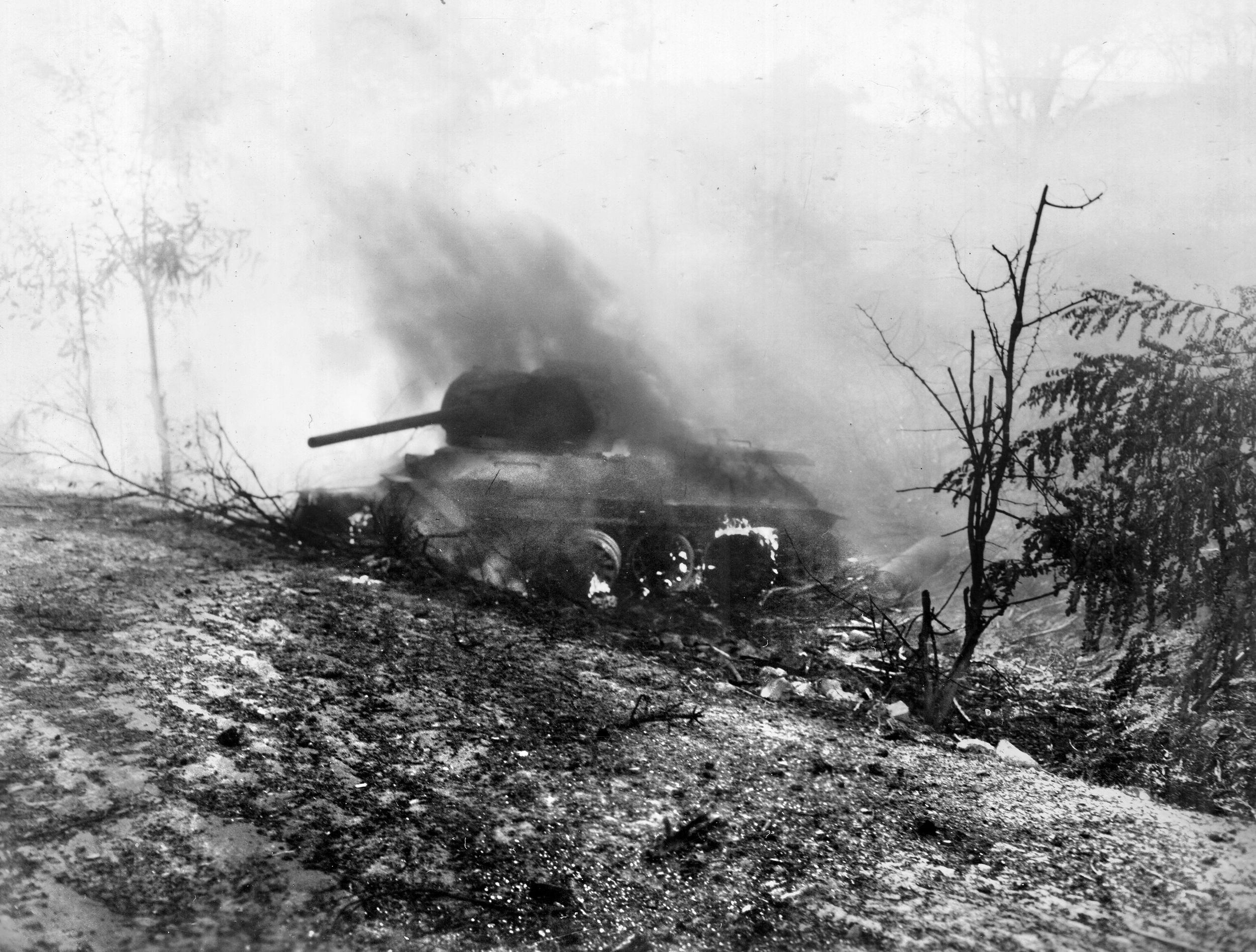
Despite the heavy fire aimed against Stafford and his fellow soldiers, he began to move around the right flank of his platoon, carrying his Bren gun, a light machine gun firing the standard British .303-caliber bullet from a 30-round magazine. He single-handedly knocked out an enemy machine gun nest. Unfortunately, another NKPA machine gun crew spotted him and opened fire. Stafford returned fire, suppressing the enemy weapon enough to allow his platoon mates to move up and join the action. With their fire helping him, Stafford advanced again, firing his Bren from the hip and enabling his fellows to take the entire position.
While his platoon reorganized, Stafford decided to move ahead and clear any other positions he could find. Coming upon what looked like a camouflaged bunker, he fired a burst into it. The structure burst into flame. Stafford had actually found a concealed T-34/85 with some spare ammunition strapped to its side. This fire forced the crew to abandon the vehicle. Another account states his bullets ignited the spare fuel tanks on the back of the tank. Soviet tanks of the Korean War-era frequently carried spare fuel drums behind the tank’s rear deck. Either way, Stafford knocked out a tank with a Bren gun. The U.S. Army awarded him a Silver Star for his actions that day.
Once D Company secured its ridgeline, A Company advanced on the north side of the road and soon had the ridge under control. With his troops having secured ridges on both sides of the road, Coad decided it was too late in the day to advance further. He ordered the brigade to form a defensive perimeter for the night.
The two infantry companies stayed on the ridges with the tanks in support, while Nordstrom’s platoon stayed along the road. The smoke from the burning North Korean tanks gradually dissipated, revealing a knocked out SU-76 sitting next to the first T-34/85 that had been destroyed in the battle. The crew apparently joined the battle partway through, using the smoke to cover its approach.
The North Koreans returned after dark and attacked the Australian D Company after an artillery preparation. One Australian platoon held its fire until the NKPA troops were just 40 feet away, causing heavy casualties at point blank range. The fight wore on for two hours with some enemy troops infiltrating the Australian perimeter.
At 9:30 p.m. the fighting ended, but another attack hit A Company on the other ridge. This attack was stopped by heavy artillery and mortar fire, much of it fired at so-called danger close range; that is, anything less than 500 yards from friendly troops. The U.N. troops found hundreds of NKPA dead in and around the Australian perimeter the next morning.

The American tankers also had a stiff fight that night. NKPA infantry attacked Nordstrom’s platoon at 9 p.m. The North Koreans were seemingly intent on destroying as many tanks as they could manage. The U.S. platoon was still about 100 yards east of the narrow defile but off the road. At one point there were so many North Koreans spread out around the platoon Nordstrom ordered his crews to turn on their headlights to help find them all. The American tank crews fired their machine guns at any North Korean they spotted. The crews also fired their pistols and hurled hand grenades at any enemy soldiers who succeeded in getting close to them.
For the next few hours the area around the American platoon was alive with the staccato chatter of machine guns, the low explosions of grenades sending metal fragments sailing through the air, and the booming of .45-caliber Colt automatic pistols aimed at shadowy figures in the dark. The next morning the American platoon found as many as 30 dead North Koreans within their perimeter. Some were only a few feet away from a tank.
That morning the 27 Commonwealth Brigade resumed its advance on Chongju, nearing the town in the late morning. A few skirmishes occurred but by late afternoon Chongju, abandoned by the NKPA, was in the hands of U.N. forces. Tragically, that evening, an incoming artillery shell exploded near Lt. Col. Green, inflicting him with a severe abdominal wound. He died on November 1, 1950, and the U.S. Army posthumously awarded him a Silver Star.
Tank battles were relatively rare during the Korean War and most occurred in the first months of the conflict. The 89th’s experiences were typical, with the North Korean tankers generally losing to the better supplied and equipped United Nations troops, despite the training shortcomings the Americans had at the war’s beginning. Most NKPA tanks were lost to U.N. aircraft, with some to mines and mechanical failure. When the two sides met in a tank engagement, however, even the relatively effective T-34/85 proved unable to defeat the American’s Pershings and Shermans.
The 89th Medium Tank Battalion served for the rest of the war. Afterwards, it remained as part of the 25th Infantry Division, until it was deactivated in February 1957. Dolvin remained in the U.S. Army until 1975. He eventually became a lieutenant general. He had fought in World War II, Korea, and Vietnam, and is one of America’s 50 most decorated soldiers. He died in May 1991 and is buried in Arlington National Cemetery.
Since the NKPA was near defeat by that time in the conflict, the armed forces of the People’s Republic of China entered the war on October 19, 1950. China sent hundreds of thousands of troops streaming across the Yalu River and into the Korean Peninsula. The Chinese steadily pushed back the U.N. forces during the harsh winter of 1950-1951. The war eventually turned into a stalemate, and the opposing sides negotiated a ceasefire on July 27, 1953. Neither side wanted to risk broadening or intensifying the conflict for fear of starting World War III. That ceasefire remains in place to this day. The Korean War has not yet officially ended.
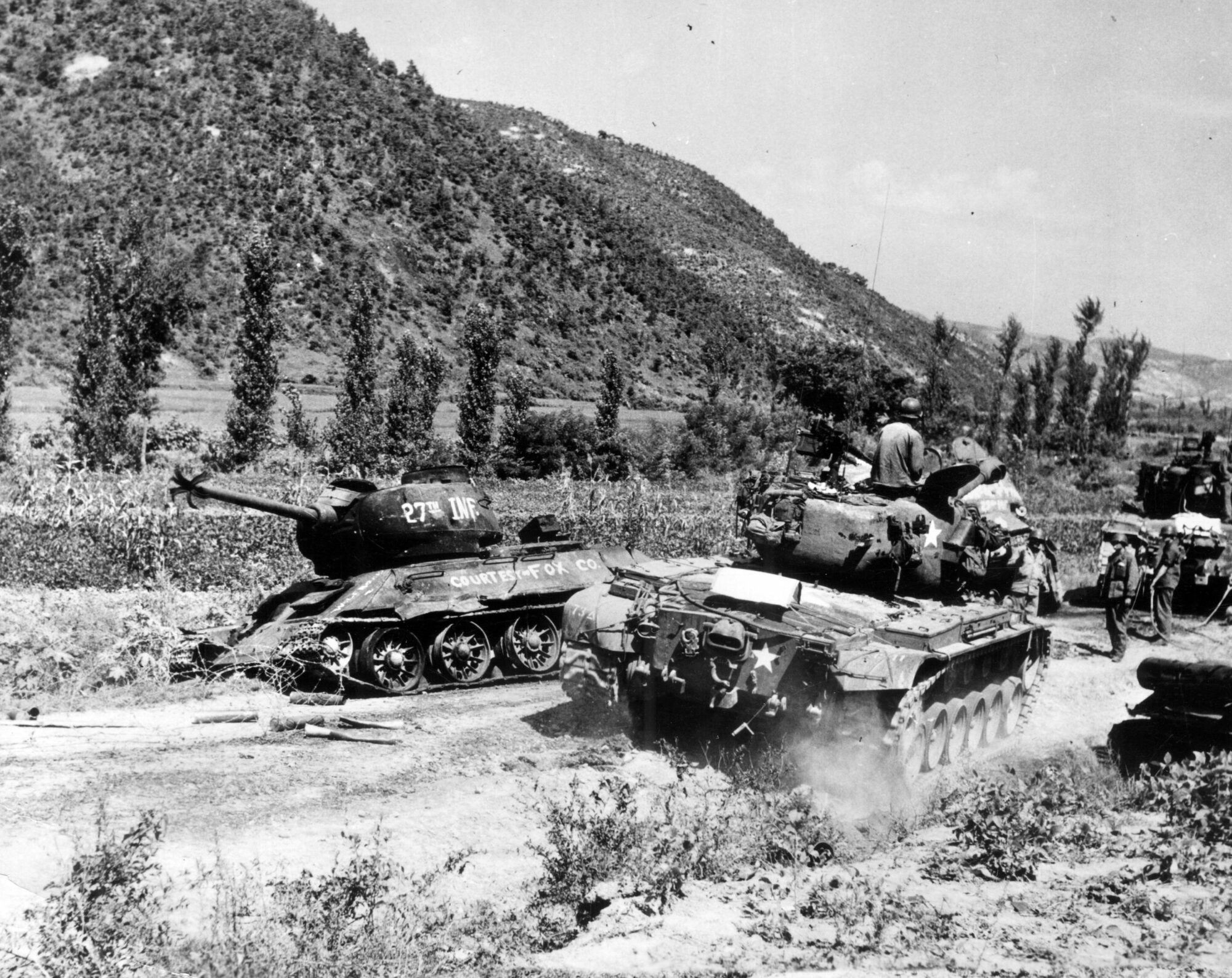
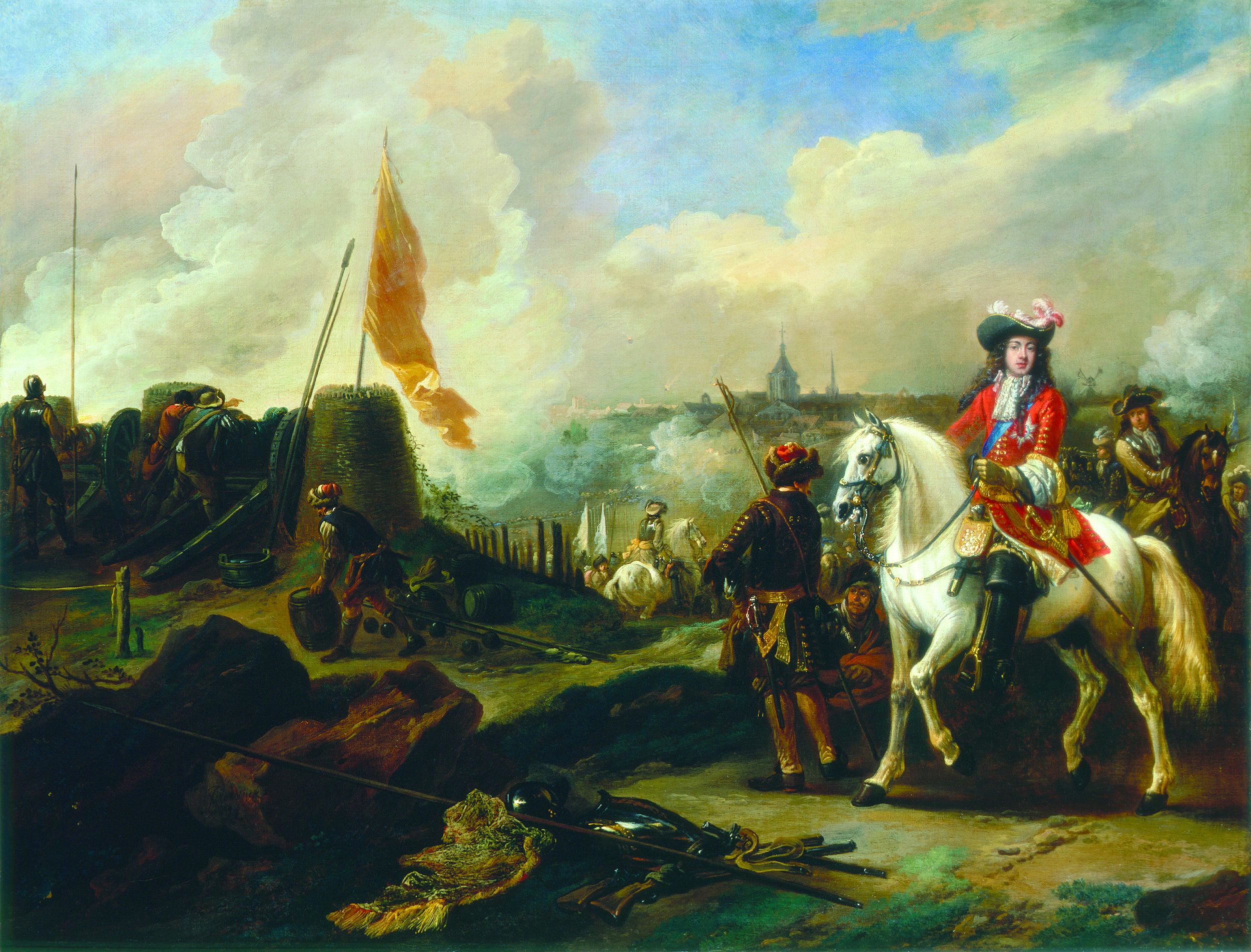
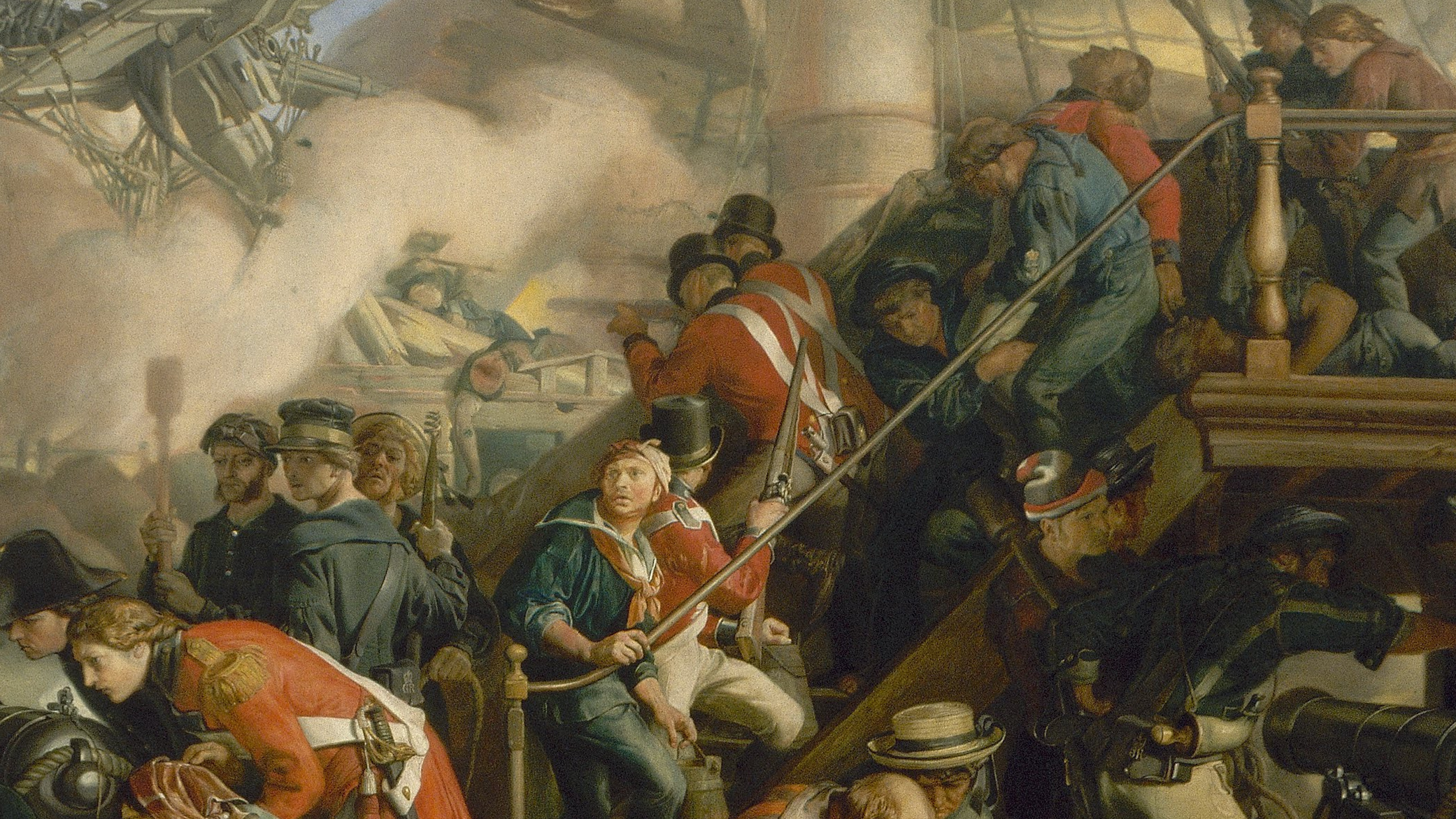
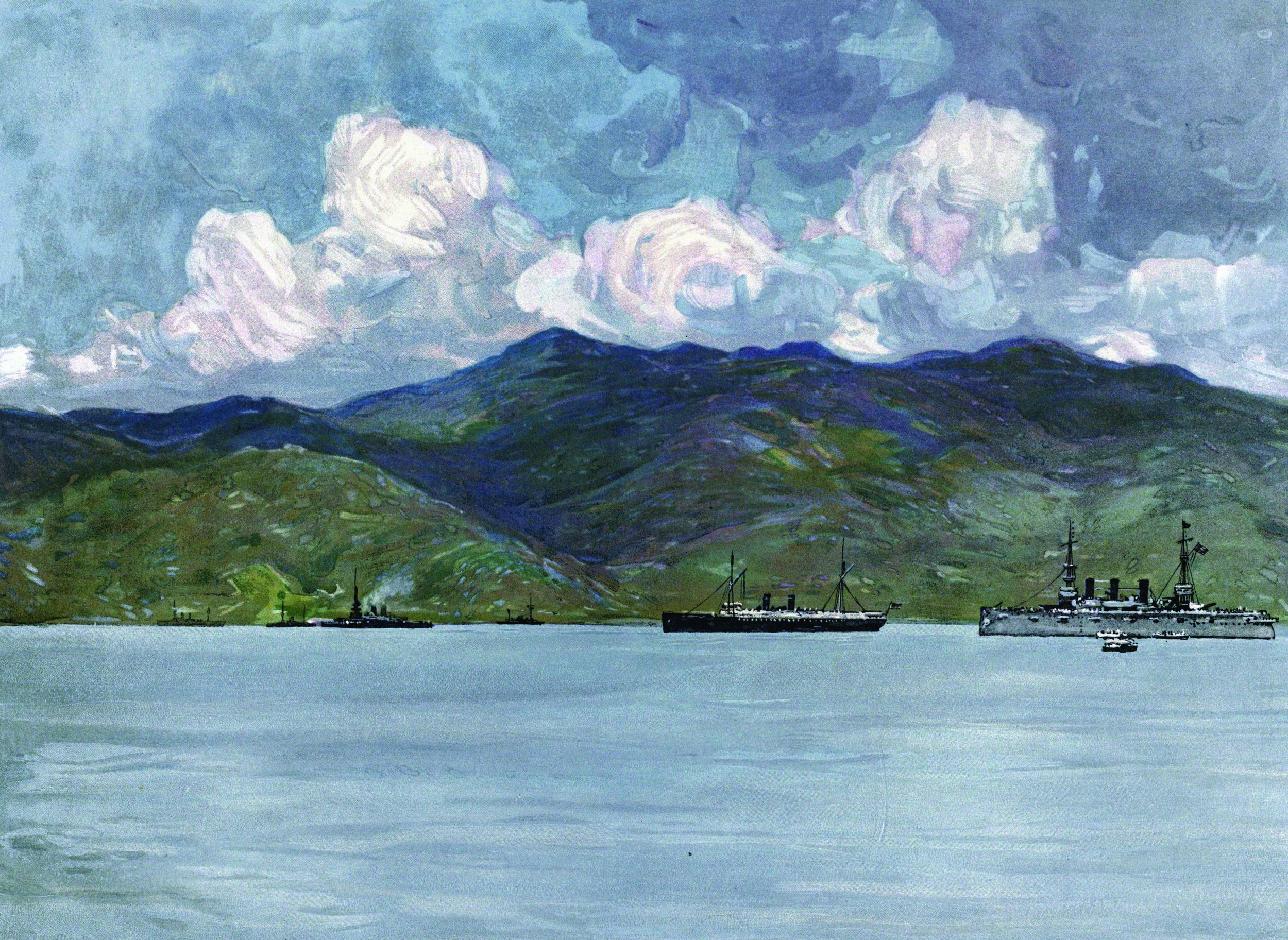
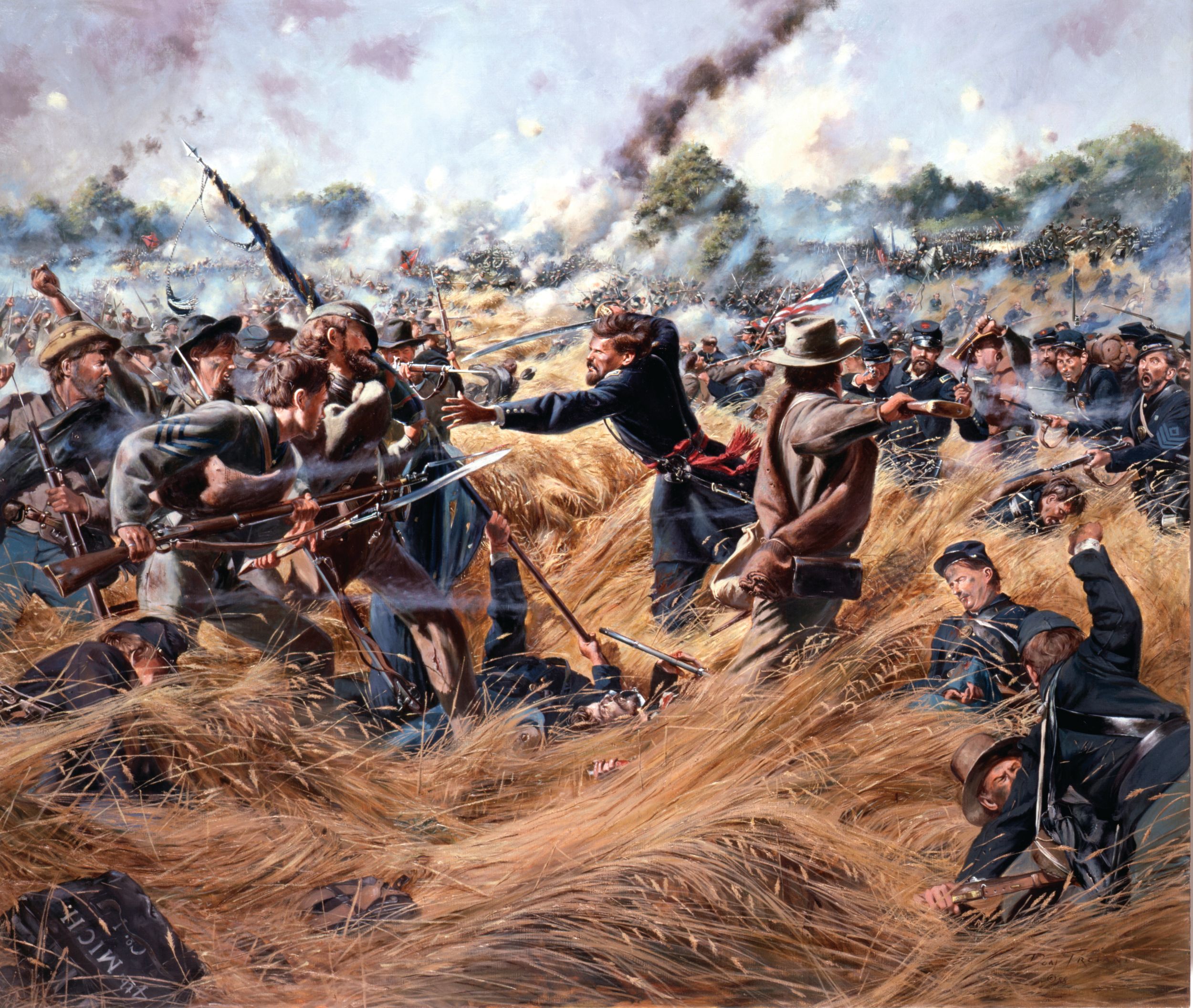
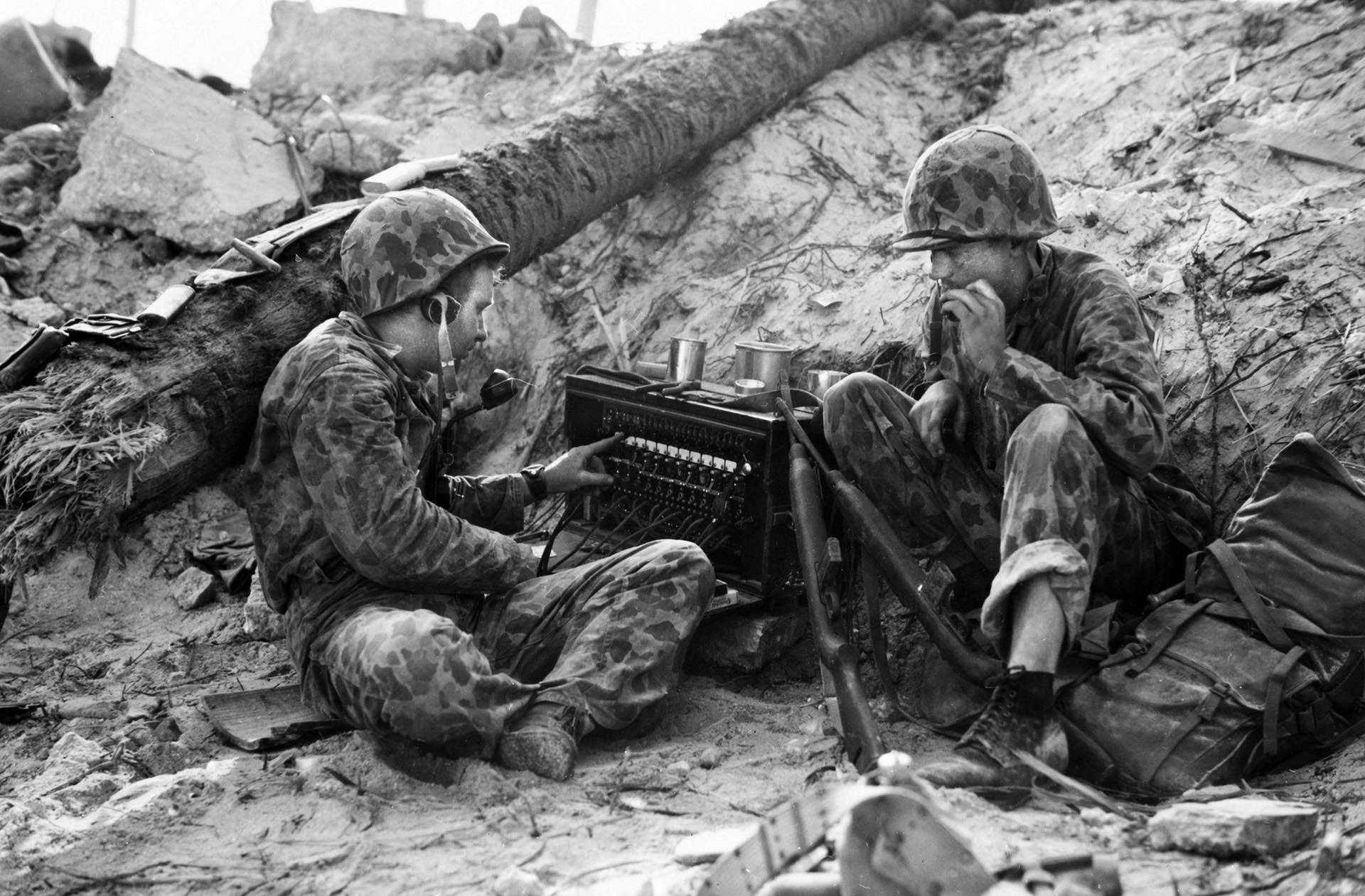
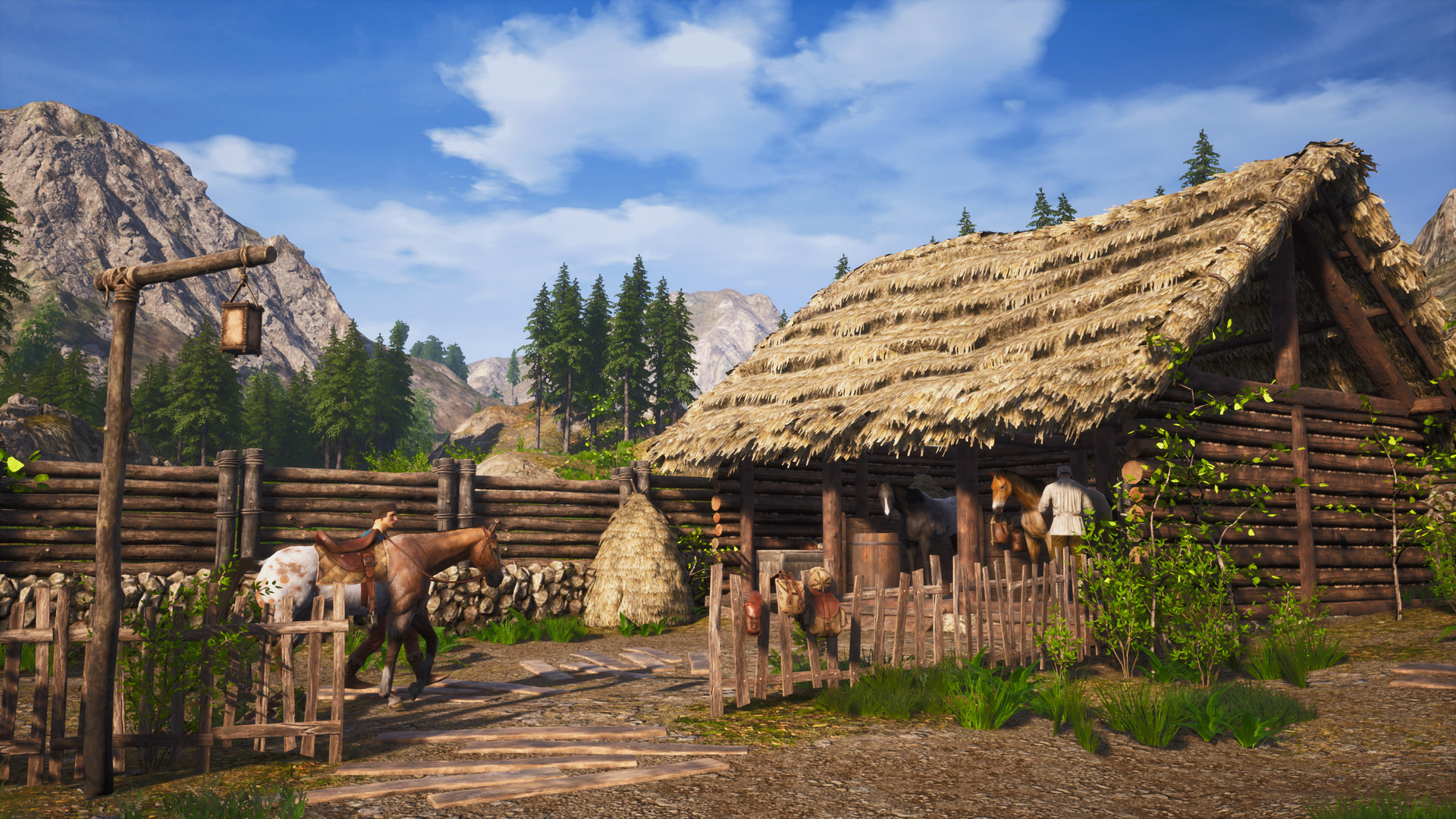
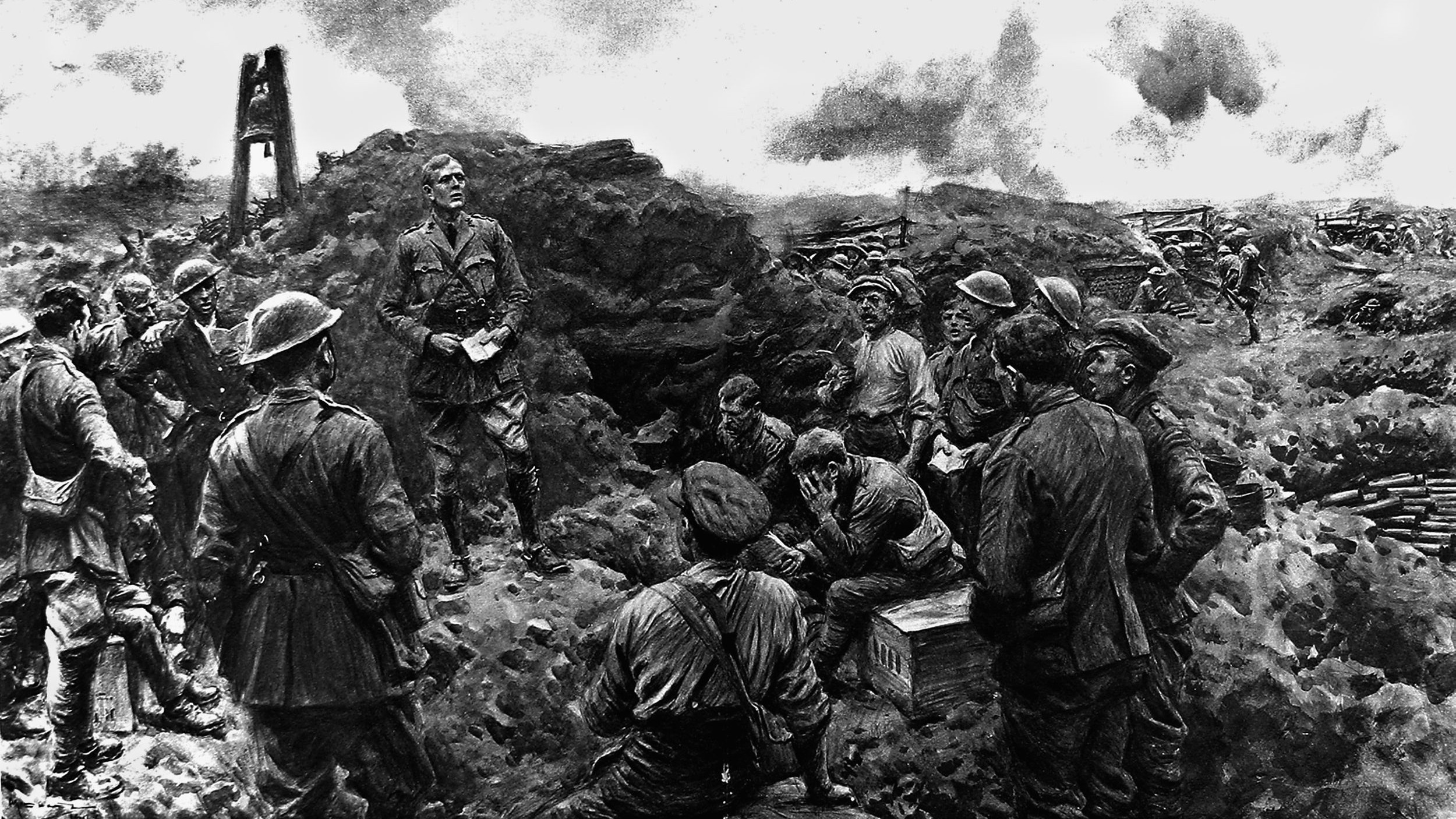
Join The Conversation
Comments
View All Comments